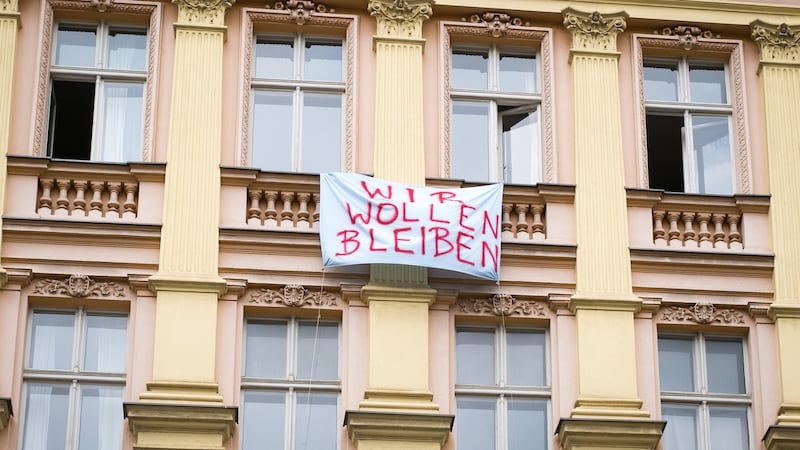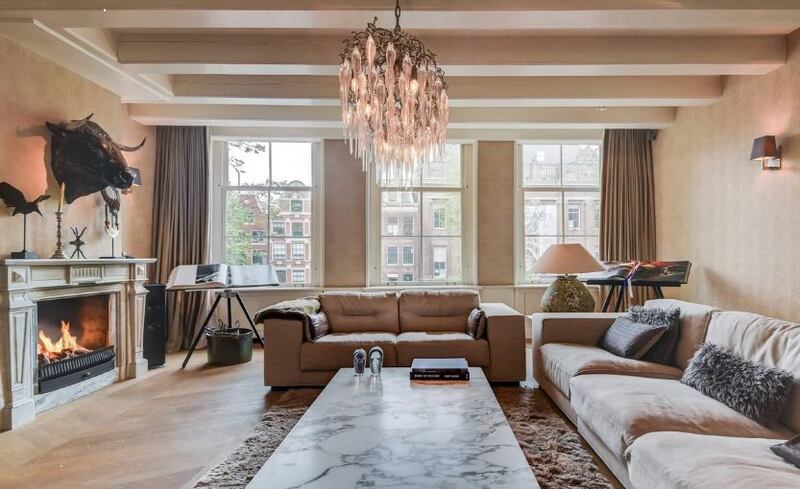VIENNA
Derek Scally
Karl Marx remains a disputed political theorist, but no one is complaining at Vienna's best-known public housing block that carries his name. Karl Marx Court is a pink-and-cream housing complex of 1,400 apartments built in the 1930s as part of Vienna's century-old Gemeindebau (public housing) programme. In post-Habsburg Austria, amid a drastic housing shortage and a TB epidemic, politicians here prioritised the housing question.
“In Vienna 100 years ago they saw where a lack of housing can lead and didn’t want to go back there,” says Markus Leitgeb, spokesman for Vienna public housing.
The idea of public housing established itself and has never gone away, making Vienna a world leader in the practice. About two-thirds of Viennese residents live in publicly owned apartments, based on a cost-rental approach, which links rents to incomes. This doesn’t just cut the link between price and market values, it also insulates the city from property market extremes.
As Vienna never followed other cities and sold off its social housing – to tenants or private investors – the steady rental income allows public housing companies to keep adding new blocks. Qualification depends largely on a means test – an income of €3,300 a month or less for a single person. But there is also a needs-based criteria. Growing families can apply for a move to a bigger flat, while older tenants can apply to downsize or move to an apartment with a lift.
Though universally admired – about 20 groups from cities worldwide visit each year to learn more – Vienna’s public housing officials say they rarely hear back from visitors who have turned their admiration into action.
Dublin City Council visited Vienna in 2019 and, back home, launched an exhibition and lecture series on the Vienna model.
To overcome ideological inhibitions in a society of homeowners, the council promised to push ahead with 800 cost-rental units in Ballymun and Inchicore.
At present, Inchicore is planned for delivery in 2026.
After visiting Vienna three years ago, former councillor Ciarán Cuffe, now a Green MEP, said he was “cautiously optimistic” that a shift was under way in Dublin. He remains optimistic but frustrated.
“The system of sign-off and approval of local authority plans by central government needs to be simplified,” he says. “I know we can deliver this in Dublin, but it requires a greater sense of urgency at all levels.”
BERLIN
Derek Scally

Moheb Shafaqyar should be Berlin’s happiest man. In September some 56 per cent of Berliners backed the demands of his movement to strip corporate landlords of their holdings in the capital.
It was a radical response to a radical problem: a housing crisis in the German capital that has seen rents in some areas jump as much as 146 per cent in 10 years.
After three post-unification decades, Berlin was the big easy for tenants, with ample, cheap housing and a declining population. Now investors have piled in, the population is growing and gentrifizieren is a dirty word.
The citizens’ initiative Expropriate Deutsche Wohnen, named after one of Berlin’s largest landlords, argued that some 240,000 apartments could be taken off the open market – and rents controlled – if the city bought them back from private firms with more than 3,000 apartments each.
On election night, the campaign founders were jubilant at what they called an “unambiguous result ... to drive speculators and property sharks out of the city”.
Three months on, the organisation is furious, accusing Berlin of “transparent delaying tactics”. Rather than act, Berlin’s new city-state government is to set up a commission that will sit for a year and present non-binding proposals on how to proceed. Incoming Social Democratic (SPD) mayor Franziska Giffey says she respects the vote but disagrees with it, pointing out that it will cost billions in buy-backs yet not create any new housing. Her counter-offer – to build 20,000 new public housing apartments a year until 2030 – has been greeted with scepticism, as previous goals were never met. An effort by the last city government to cap rents also came to nothing and was ruled unconstitutional in April, though the new government has vowed to try again.
The fate of the Berlin referendum is anything but clear, with major constitutional and financial concerns flagged ahead of the vote. But the vote has achieved one thing already: it has spooked Berlin’s incoming city-state coalition to take seriously growing public anger at the housing squeeze.
Not that Berlin is alone with its housing crisis. With all cities experiencing the same problem, Germany’s new federal SPD-lead coalition has identified the housing crisis as “the social question of our time”. It plans to build 400,000 new apartments, including a quarter with subsidised rents.
With much talk but, as yet, little action, tenants in Berlin and elsewhere have learned to be sceptics.
NETHERLANDS
Peter Cluskey

Protest marches have become a frequent sight in Dutch cities complaining at the government’s persistent failure to build up an adequate housing stock – with the result that there’s a crisis in affordable rental accommodation and long waiting lists for social housing.
Space has always been a problem in the Netherlands, Europe's most densely populated country, with 17.5 million people on a postage stamp roughly the size of Munster.
Even so, the problem is huge: at least 845,000 new homes will be needed by 2030 just to meet currently foreseeable needs.
Uncertainty during the first year of the pandemic saw rents fall marginally, but they’ve been rising again since the third quarter of this year, with tenants paying on average 2.5 per cent more per square metre than a year ago – and a dearth of properties on offer.
After Mark Rutte’s government collapsed last January, all the main parties promised during the general election in March to make housing a national priority. Finally, as Christmas approaches, a new coalition has just been put together – and there are indications that real change is in the offing.
A new housing minister to be appointed in January will have the budget to build 100,000 additional homes a year and the power to pressurise local authorities to free up development land.
A levy on landlords will be abolished to encourage housing corporations to build more affordable homes, while a “right to buy” scheme is being introduced for social housing tenants.
And a controversial scheme allowing well-off parents to make large tax-free gifts to their children to hoist them on to the property ladder will be abolished.
The aim is to rebalance a schizophrenic market where those who can afford to have been taking advantage of record low interest rates to fuel prices that have been rising steadily since June 2013. In October alone, the year-on-year increase was 18.3 per cent.
So, contrary to the image of Dutch common sense, there’s zero to be learned from this dysfunctional rental market – apart, perhaps, from how to charge.
At the top end, for instance, a beautifully restored 475sq m Amsterdam canal house was listed recently at €16,000 a month.
“People are finally realising it’s not their fault they can’t afford to buy a modest house or even rent one,” says Sander van der Kraan, who co-organised one march. “That’s fuelling social unrest.”














